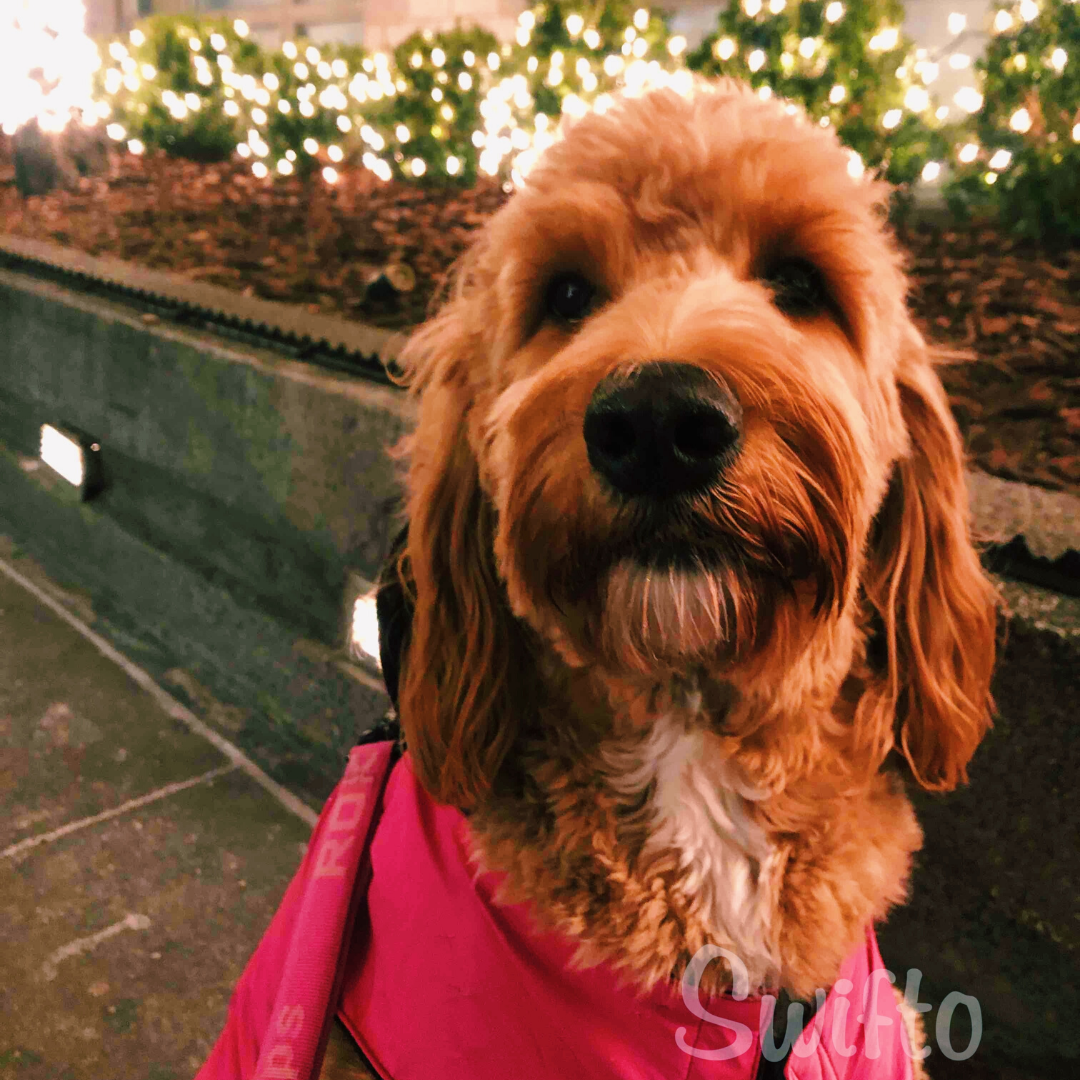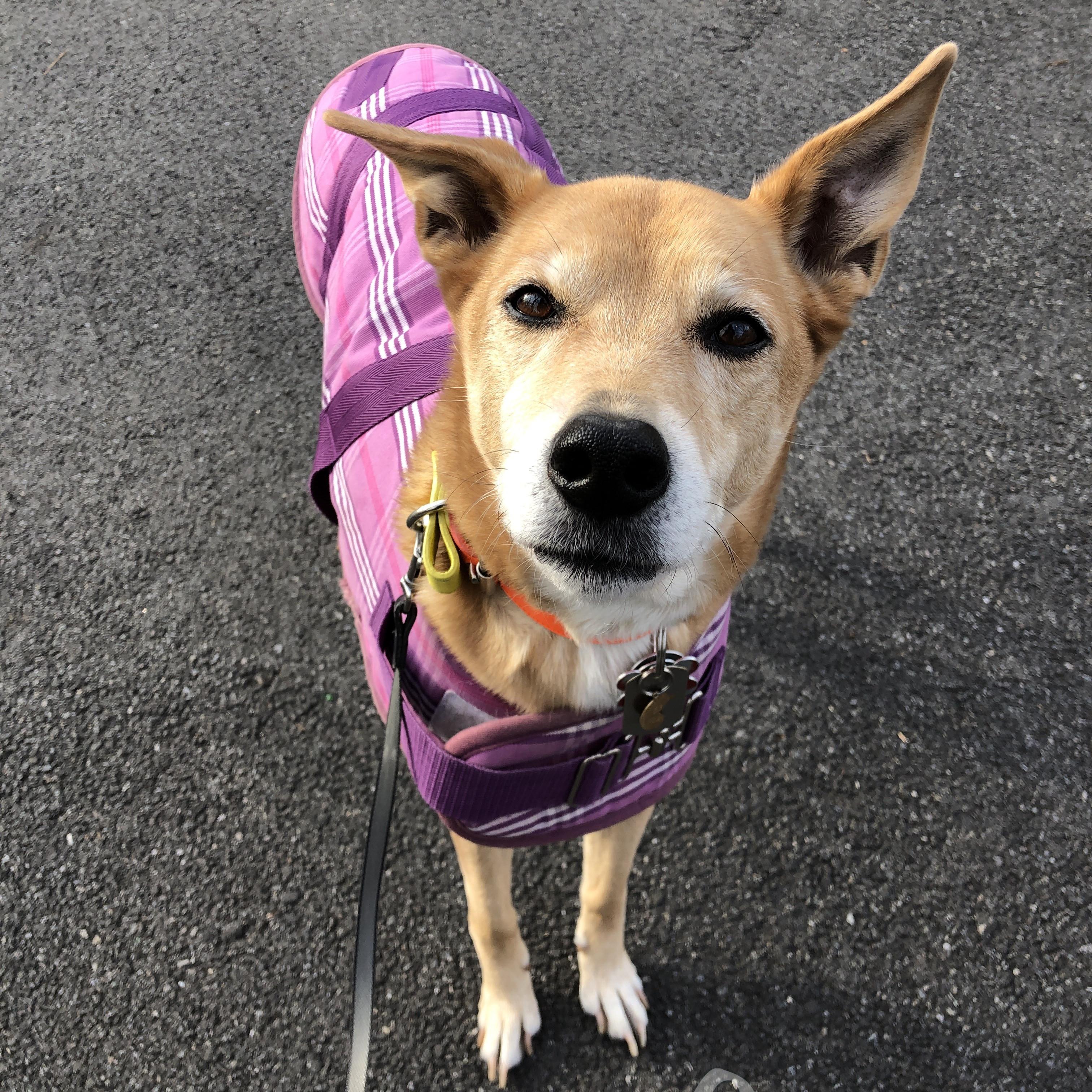
It’s difficult enough as it is for us to maintain our wardrobes. Weather is unpredictable and sometimes inaccurate based on what we hear on television or read on our smart phones. We go from freezing in the morning, to leaving work with a pool of sweat dripping down our backs. In this dynamic world of temperature changes, it’s important to empathize with and understand that you may not be the only one shivering or sweating. Your dog feels the changing seasons as well, and we sometimes look past this. Your first concern might be, “Do dogs even need clothes?”. This can be concerning to some who mock the idea of dressing a dog but can be very beneficial for dogs who often shiver in the wintertime or dread going outside in the rain. If you’re on the fence about dressing your dog, ponder this: Okay sure, dogs do come with their own mechanisms for retaining warmth, but some dogs have thinner layers of hair and skin than others. Some dogs are genetically predisposed with these conditions that make cold weather almost unbearable. Can you imagine going outside during a brisk and brutal winter without a jacket and gloves? Your dog is probably asking you the same thing.
If you notice that your dog is reluctant to go outside in the snow or cold weather, or shivers when he does, you may want to consider clothing him. Even in the wintertime, dogs still need to get fresh air and go on walks. Smaller, light bodied, and thinner-haired breeds are more likely to require clothing than larger dogs with dense hair coats. Also, dogs that are raised/ come from warmer countries are genetically unfit to handle cold and harsh conditions, potentially harming their health. A sweater will suffice for these types of pups. It’s important to pick the best sweater for your dog, as some materials may cause irritation. Wool and cotton are quite warm and well-insulated sweater materials. Make sure these materials are washable and easily maintained, as stains are pretty inevitable. Also, your dog should be able to easily pull the sweater on and off, so make sure you measure your dog before going shopping. Though doggy pants (to match the sweater…obviously) are extremely adorable, you should steer clear of them. Dogs cannot and should not wear pants, even in the coldest of weather conditions- only sweaters and jackets. Remember to not get caught up in the appearance of the piece, even if you want your dog to sport its ensemble with pride. Being a fashionista isn’t a priority for your dog. Function over fashion is definitely key.

In super snowy conditions, its normal to see ice melt or salt on the ground. Though beneficial to humans, the same may not be true for dogs. The ingredients in ice melt can damage and irritate your dog’s paws. Dogs also tend to lick their paws after returning from a walk. Even if you can’t see the salt, it may still be on surfaces and stick to your dog’s paws, which can cause diarrhea and vomiting if ingested. A great way to solve this issue is purchasing dog boots or socks. These will protect a dog’s paws from any salt that is on the sidewalk or road. Boots or socks are typically machine-washable and undoubtedly really cute. Booties are also super useful in the summertime when sidewalk pavement or concrete gets extremely hot. This causes your dog’s paws to heat up and can cause discomfort and damage.
Whether your dog is hanging out the car window on a nice day or often takes walks in sunny areas, doggy sunglasses may be a necessary addition to your dog’s wardrobe. Veterinarians highly recommend them, as they provide UV protection and decrease your dog’s chances of serious eye conditions. Dogs that are predisposed to have eye problems, like pugs and shepherds, will benefit from sunglasses or goggles. If you are shopping for a pair of sunglasses or goggles, make sure to buy ones that have flexible frames and shatterproof lenses. They should also be close-fitting (but not uncomfortably tight) to ensure they stay on and don't fly out the window during a car ride. Sunglasses are a great way to protect your dog’s eyes from harmful/ strong sun rays and look super cool.
The doggy rain coat. Debatably the cutest article of dog clothing on the market. The doggy raincoat is the pinnacle of fashion meeting function. There are many dogs that don’t like getting wet, ranging from small dogs, like chihuahua’s, to large dogs, like Labrador Retrievers. Coats come in all shapes and sizes and allow your dog to relieve himself in the backyard or go for a walk outside in the event of a rain shower. Rain coats are perfect for dogs who recently had surgery or have bandages that are required to stay dry. They lower your dog’s likelihood of contracting a disease, as prolonged exposure in rainy conditions is a big no-no. Also, putting your dog in a raincoat saves you from having to clean him dry and minimizes the dreaded wet dog odor.
Most other pieces of clothing, such as t-shirts, costumes, shoes, accessories, etc. are not necessary and your dog will probably find them uncomfortable. Some dogs, though, do enjoy getting dressed up in a fun costume. If this description fits your dog, ensure that your costume isn’t constricting his air way, neck, or body in any way. He should be able to walk with ease and feel comfortable. T-shirts, shoes, and accessories don’t necessarily correspond with a specific type of weather, as they are worn mainly for aesthetic and fashion purposes.
At the end of the day, your pup’s comfort should be your main priority. Exposure to cold and rainy weather conditions increase your dog’s susceptibility to illness, so it’s important to know when they need to be appropriately clothed. Just like us, dogs don’t enjoy shivering in the middle of winter or going on a walk in the midst of a rain shower. By providing the proper apparel, your dog can still enjoy the great outdoors while remaining safe, warm, and protected. Looking to book a dog walk?

